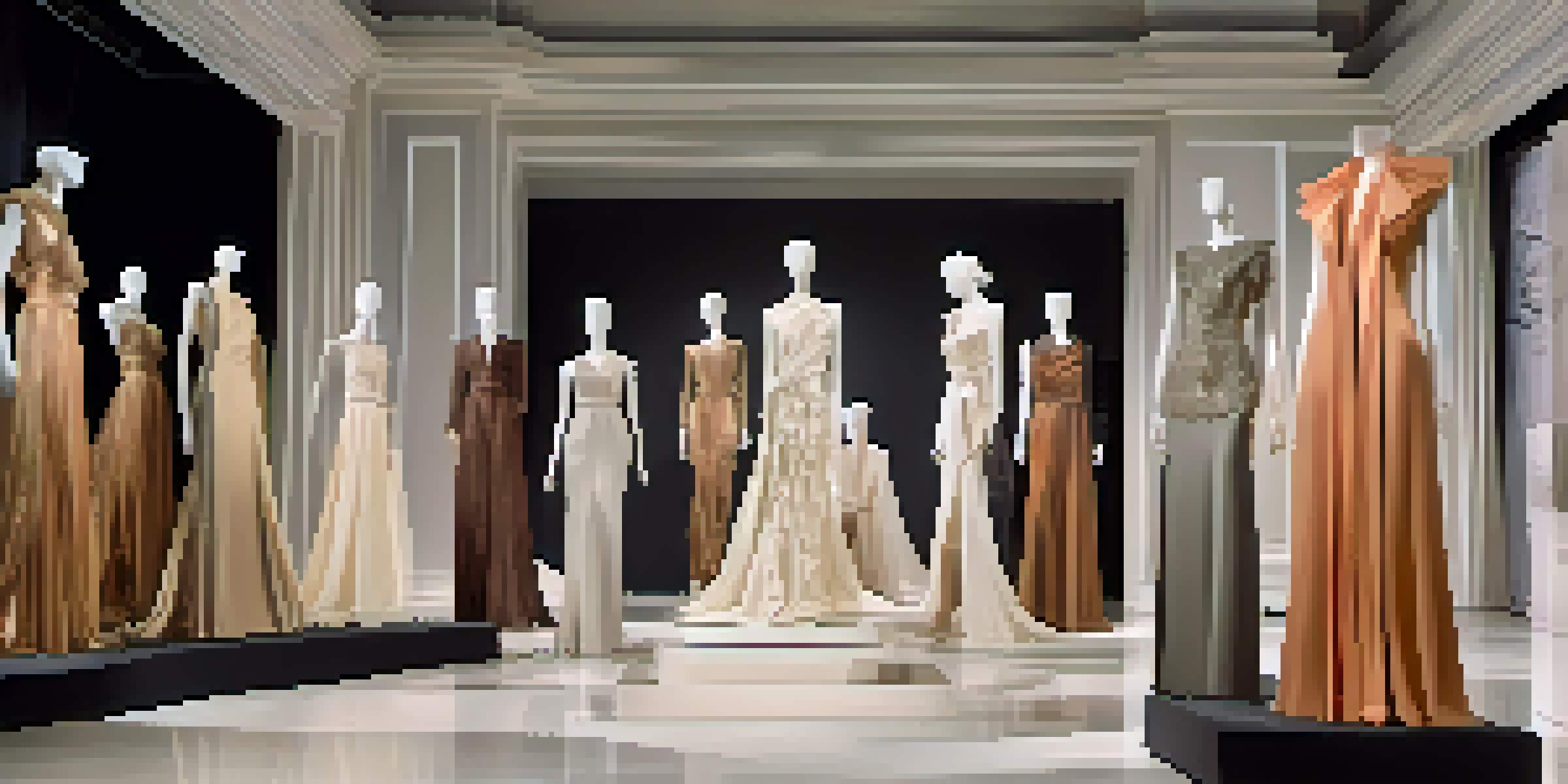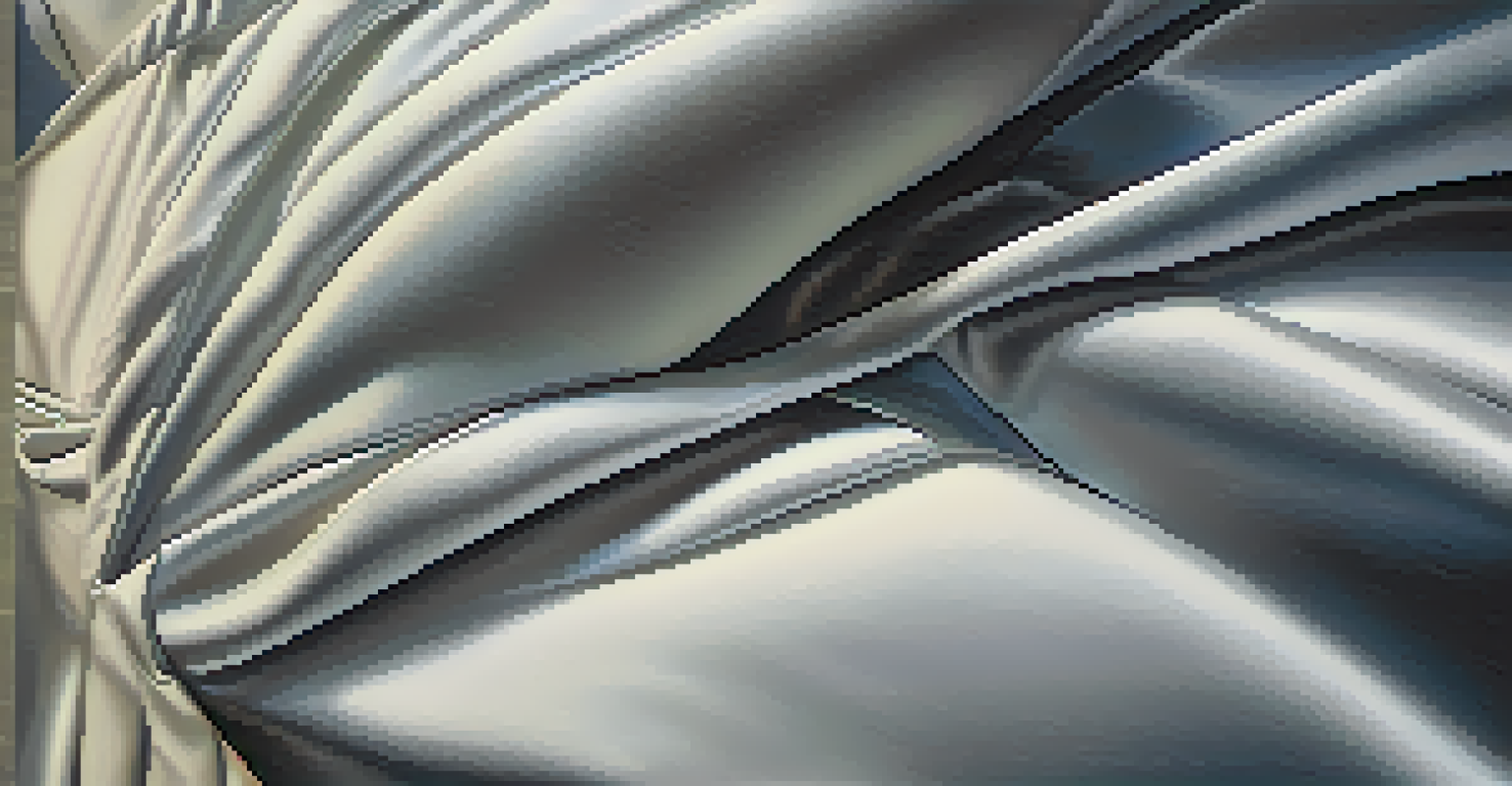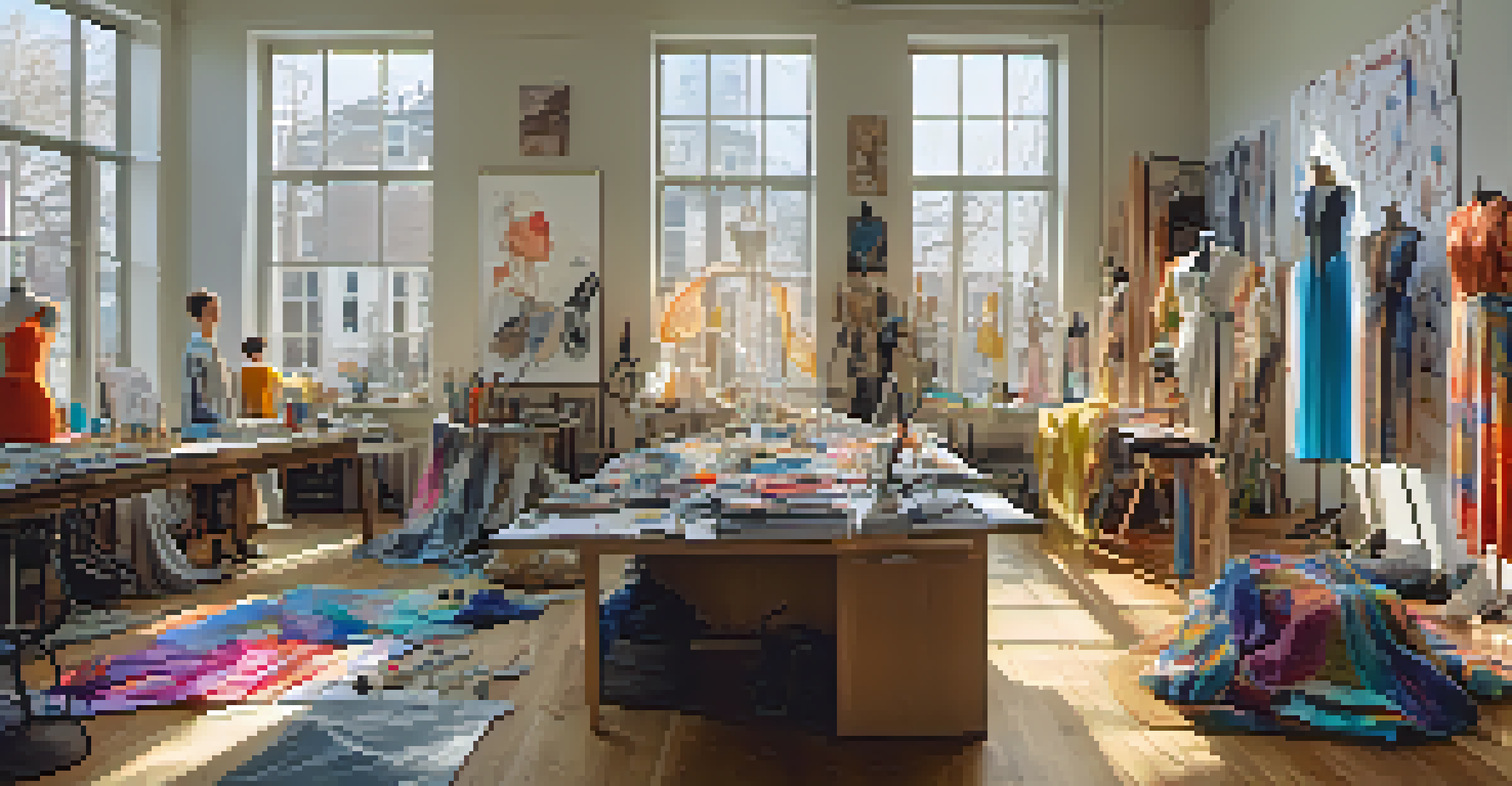Fashion and Sculpture: Three-Dimensional Art in Design

Understanding the Fusion of Fashion and Sculpture
Fashion and sculpture might seem worlds apart at first glance, but both are forms of artistic expression that share a rich history. They intersect through the use of materials, shapes, and the human form, creating a dialogue between the two. Designers often draw inspiration from sculptural elements to elevate their garments, making each piece a wearable art form.
Fashion is the armor to survive the reality of everyday life.
Imagine a dress that flows like a piece of abstract sculpture, with curves and lines that mimic the contours of a statue. This blend not only enhances aesthetic appeal but also challenges traditional notions of what clothing can be. Just like a sculpture, fashion becomes a three-dimensional canvas showcasing creativity and craftsmanship.
By merging fashion with sculpture, designers create a unique narrative that transcends mere clothing. Each piece tells a story, inviting viewers to appreciate the artistry involved in its creation. This relationship continues to evolve, pushing boundaries and encouraging innovation in both fields.
Key Influences from Sculpture on Fashion Design
Many fashion designers have looked to renowned sculptors for inspiration, drawing from their techniques and philosophies. For instance, the minimalist approach of Donald Judd can be seen in the clean lines of contemporary clothing. Similarly, the organic forms of Henry Moore have influenced designers who seek to create fluid, natural silhouettes.

This influence extends beyond mere aesthetics; it also encompasses the use of materials. Designers often experiment with unconventional fabrics and textures, much like sculptors do with stone, metal, and clay. This exploration leads to innovative designs that challenge the status quo and inspire new trends.
Fashion and Sculpture Intersect
Fashion designers often draw inspiration from sculptural elements, creating garments that serve as wearable art.
In this way, sculpture acts as a catalyst for creativity in fashion, encouraging designers to think outside the box. The result is a dynamic interaction that enriches both disciplines, paving the way for exciting collaborations and collections that captivate audiences.
Iconic Fashion Designers Who Embrace Sculpture
Several iconic fashion designers have made significant contributions to the intersection of fashion and sculpture. For instance, Issey Miyake is known for his sculptural garments that often resemble works of art. His innovative use of pleating and draping creates dynamic shapes that are both wearable and visually striking.
Art is not what you see, but what you make others see.
Similarly, Alexander McQueen blurred the lines between fashion and sculpture with his theatrical designs. His runway shows were legendary for their dramatic presentations, showcasing garments that resembled sculptural masterpieces. Each collection told a story, often addressing deeper themes that resonated with audiences.
These designers exemplify how fashion can transcend traditional boundaries, becoming a form of sculptural expression. Their work inspires a new generation of creators to explore the limitless possibilities that arise when fashion meets art.
The Role of Materials in Three-Dimensional Fashion
Materials play a crucial role in the relationship between fashion and sculpture. Just as sculptors select specific mediums to convey their vision, fashion designers choose fabrics and textures that enhance their designs. From structured textiles to flowing silks, the right material can transform a simple garment into a sculptural statement.
For example, the use of neoprene in fashion creates a sculptural silhouette that holds its shape, reminiscent of a sculpted form. This innovative approach to fabric allows designers to experiment with structure and volume, resulting in striking pieces that challenge the conventions of traditional clothing.
Materials Shape Artistic Expression
The choice of materials in fashion plays a crucial role, allowing designers to create sculptural silhouettes that enhance their designs.
Furthermore, the tactile nature of materials invites interaction, encouraging wearers to engage with their garments on a deeper level. This sensory experience enhances the appreciation of fashion as an art form, solidifying its place alongside sculpture in the world of creative expression.
The Impact of Technology on Fashion Sculpture
In today's digital age, technology has transformed the landscape of both fashion and sculpture. Innovations such as 3D printing have opened up new avenues for designers to experiment with form and structure. This technology allows for the creation of intricate designs that were once thought impossible, merging craftsmanship with cutting-edge techniques.
For instance, designers can now create garments with complex geometries that mimic sculptural forms, pushing the boundaries of traditional fashion design. This intersection of technology and art not only enhances creativity but also invites discussions about sustainability and the future of fashion.
As technology continues to evolve, it will undoubtedly influence the relationship between fashion and sculpture, leading to exciting collaborations and groundbreaking designs. The potential for innovation in this space is limitless, promising a future where clothing is not just an item to wear, but a true work of art.
Fashion Shows as a Sculptural Experience
Fashion shows have evolved into immersive experiences that often resemble art installations. Designers are increasingly incorporating sculptural elements into their presentations, creating a visual feast for the audience. These shows go beyond merely showcasing clothing; they tell a story and convey a message through the interplay of fashion and art.
For example, a runway set designed to mimic a gallery space can enhance the sculptural qualities of the garments being displayed. The environment becomes an extension of the clothing, inviting viewers to appreciate the artistry involved in both the designs and the presentation.
Technology Revolutionizes Design
Innovations like 3D printing are transforming fashion, enabling the creation of intricate designs that blur the lines between clothing and sculpture.
This approach not only elevates the fashion show experience but also reinforces the idea that fashion is a form of art. By blurring the lines between runway and gallery, designers challenge perceptions and invite audiences to engage with fashion in a more profound way.
The Future of Fashion and Sculpture Collaboration
As we look to the future, the collaboration between fashion and sculpture is set to flourish. With the emergence of new technologies and materials, designers have the opportunity to explore uncharted territories in their creative processes. This evolution promises to yield innovative designs that redefine the boundaries of both disciplines.
Moreover, as society increasingly values sustainability and ethical practices, we may see more artists and designers working together to create pieces that reflect these ideals. By merging artistic vision with responsible production, fashion and sculpture can pave the way for a more conscious approach to design.

Ultimately, the future of this collaboration is bright, with endless possibilities for artistic expression. As fashion continues to draw inspiration from sculpture, we can expect to see a vibrant dialogue that enriches both fields and captivates audiences around the world.